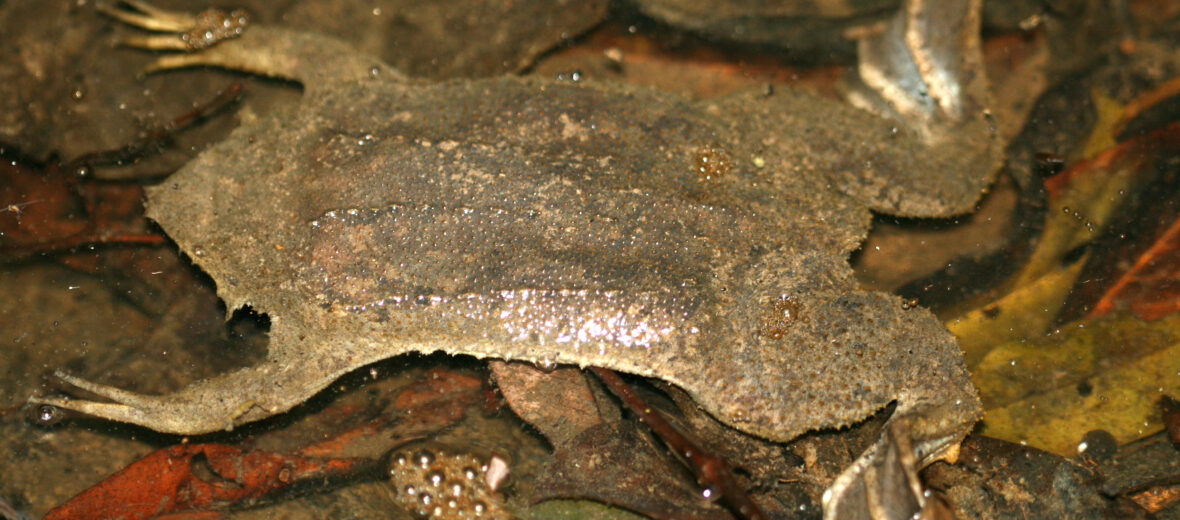
The Suriname toad resides in the tropical rainforests of Suriname and Guyana and to the south through the Amazon basin including Peru, Bolivia, and Brazil. They can also be found in the Caribbean, primarily in Trinidad’s southern and eastern locales. These toads blend perfectly into the gravel and leaf litter at the bottom of muddy, slow-moving waterways like ponds, streams, and swamps. They lay motionless in the hopes a prey item will happen by. Then, like a flash of light, strike and gulp up their unsuspecting food whole; via a suction method.
First the Stats…
Scientific name: Pipa pipa
Weight: Up to 5.6 ounces
Length: Up to 8 inches
Lifespan: Up to 8 years
Now on to the Facts!
1.) Their main foods of choice are small fish, crustaceans, worms, and other invertebrates.
2.) This toad uses its forelimbs for shoveling food into its mouth, since they have no tongues to help them swallow.
3.) The Suriname toad is sexually dimorphic (males and females look different from one another) in that the males, as is the case in most all toads and frogs, are much smaller then females.
4.) Suriname toads have beady, black, lidless eyes that are located on the top of their head. These eyes can see in all directions, which helps in predator and prey detection.
5.) Their back feet are webbed and their front toes have small, star-shaped finger tips. Each finger has 4 lobes, each of these lobes is split into more lobes.
But wait, there’s more on the Suriname toad!
6.) The Suriname toad can hold it’s breath for up to an hour!
7.) Males do not croak like typical toads do. Instead, the male makes a variety of calls that sound like metal clicking.
Did you know…?
After 3 – 4 months, the toadlets come out by crawling out through the skin on their mother’s back! It’s as fascinating as it is creepy to watch. It’s especially creepy if you suffer from trypophobia!
8.) During amplexus (where the male grasps onto the female, during mating), they will perform somersaults in the water. When upside down, the female will lay eggs, which will stick to her back. The male will then fertilize the eggs and they will repeat this process for up to an hour! This produces 60 – 100 fertilized eggs.
9.) Once all the eggs are laid and fertilized, the male swims away leaving the female motionless and on her own to tend to the babies. Then a strange thing happens, the skin on the female’s back starts swelling & eventually completely engulfs the eggs with each egg having its own pocket.
10.) These toads are vulnerable to agricultural run off that pollutes streams and rivers. They are also subject to deforestation caused by the logging industry. However, the IUCN lists these toads as Least Concern.
Now a Short Suriname Toad Video!
Also, check out the Critter Science YouTube channel. Videos added frequently!
Want to suggest a critter for me to write about? Let me know here.



